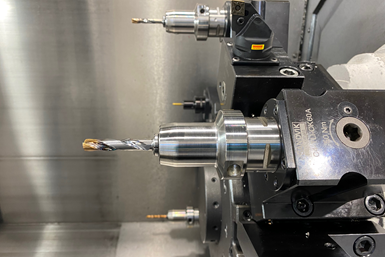As detailed in the article “Form Tapping Improves Tool Life, Costs” from MMSOnline, Siemens Energy uncovered a critical revelation in their machining operations. Shifting from cut tapping to form tapping proved to be a game-changer, resulting in substantial cost savings and a remarkable reduction of up to 80% in cycle time. Siemens Energy’s machining division faced a challenge with their cut tapping tool, which could only produce around 10-20 threads per tap. This posed a significant efficiency loss, particularly when dealing with parts like plunger plates, which demanded hundreds of threads.
Pre-drilling the holes also became a time-consuming task, consuming 25 minutes for just 12 holes. The situation had reached the point where they were breaking taps for every part, necessitating manual tapping and repair work. Removing and repairing parts from the machine introduced its own set of complexities, including the realignment of hole locations after repairs.
The solution to this issue required not just one new tool but two. Siemens Energy transitioned from cut tapping to form tapping, a method that generates threads by pushing metal together instead of cutting it away. To ensure the success of this transition, Siemens Energy relied on Sandvik Coromant’s CoroTap 400 for the form tapping process.
Robert Bird, a manufacturing engineer at Siemens Energy, emphasized that the key challenge in form tapping lies in creating the hole, requiring precise hole size maintenance. To address this, Siemens Energy adopted Sandvik Coromant’s CoroDrill 860, providing the necessary stability for pre-drilling the holes required for their 10-24 threads. Subsequently, the company’s machinists employed the CoroTap 400 to create threads efficiently.
Click here to learn more about Toolcraft Corp’s capabilities and products.
Photo and article with all rights reserved, courtesy of mmsonline.com





